'My weekend as a 28-year-old in Chicago' has a Wikipedia article...for now?
Plus: HTML Day, internet culture newsletter names, and brand-meme page partnerships.
It’s August. Here’s a meme I made last year, inspired by the “This is how June is going to feel” Shirley Temple meme.
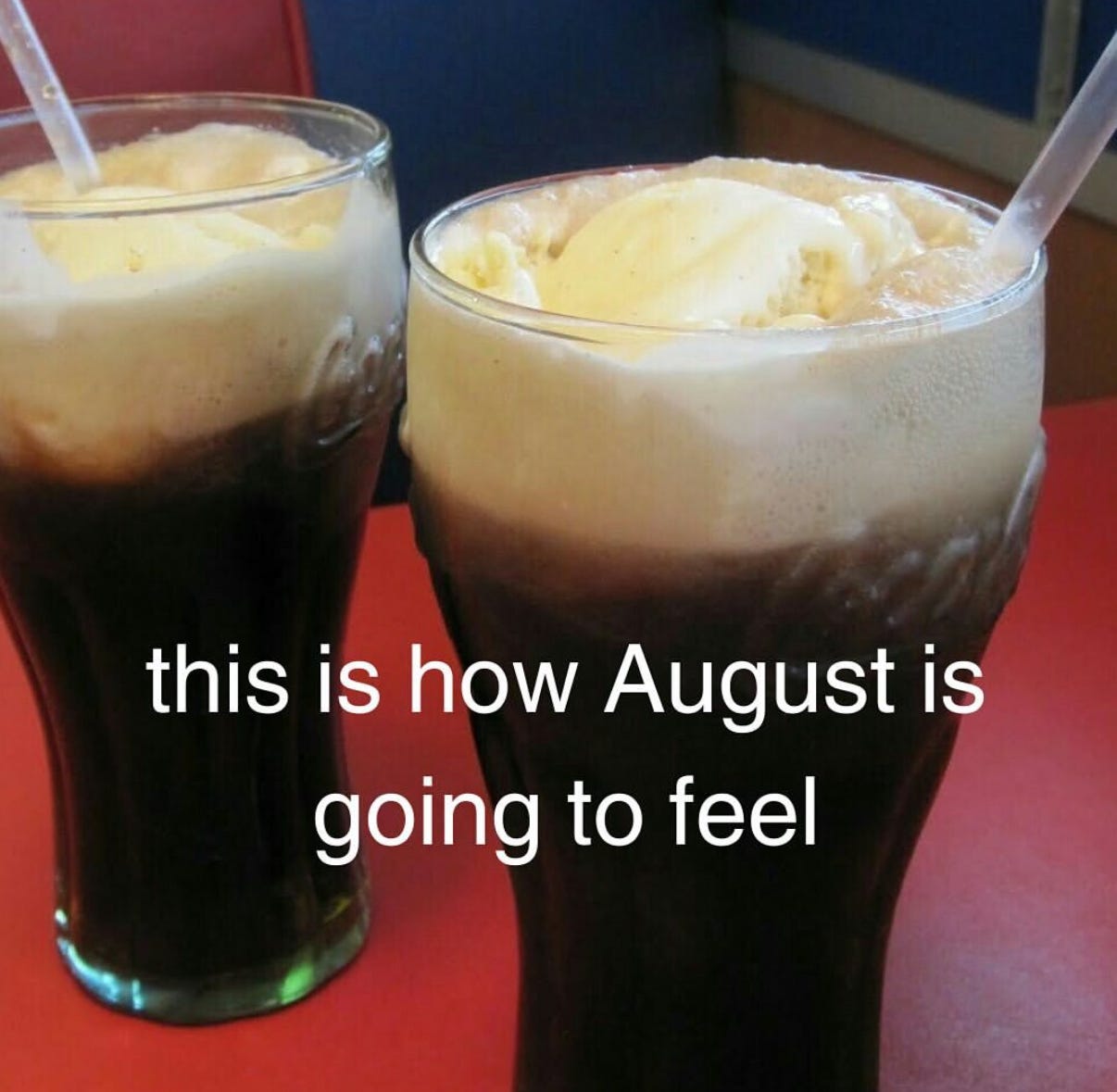
Let me know if you have any strong opinions about how July felt.
Today’s issue of PHONE TIME includes: the “My weekend as a 28-year-old in Chicago” Wikipedia article, @afffirmations partnership with the “Oh, Hi!” movie, internet culture newsletter names, and the Instagram x Polyester Zine E-Girl Summit.
Last week, I saw an X post by software engineer Adam Aaronson, who also recently wrote a blog post about drinking all 102 International Bartenders Association cocktails: ”Finally … a Wikipedia page for the greatest 135 seconds this internet has ever seen.”
Indeed, “My weekend as a 28-year-old in Chicago” had made it to Wikipedia. Posted in 2022 by Mike Schwanke, the video—which takes viewers through an increasingly bizarre journey including multiple visits to the Museum of Ice Cream and margarita towers consumed—parodies a kind of overambitious day-in-the-life content popular on TikTok.
“It was met with widespread acclaim from critics, with some calling it one of the greatest TikTok videos of all time,” reads the Wikipedia page. But when I revisited the article, I saw a note at the top that it had been nominated for deletion.
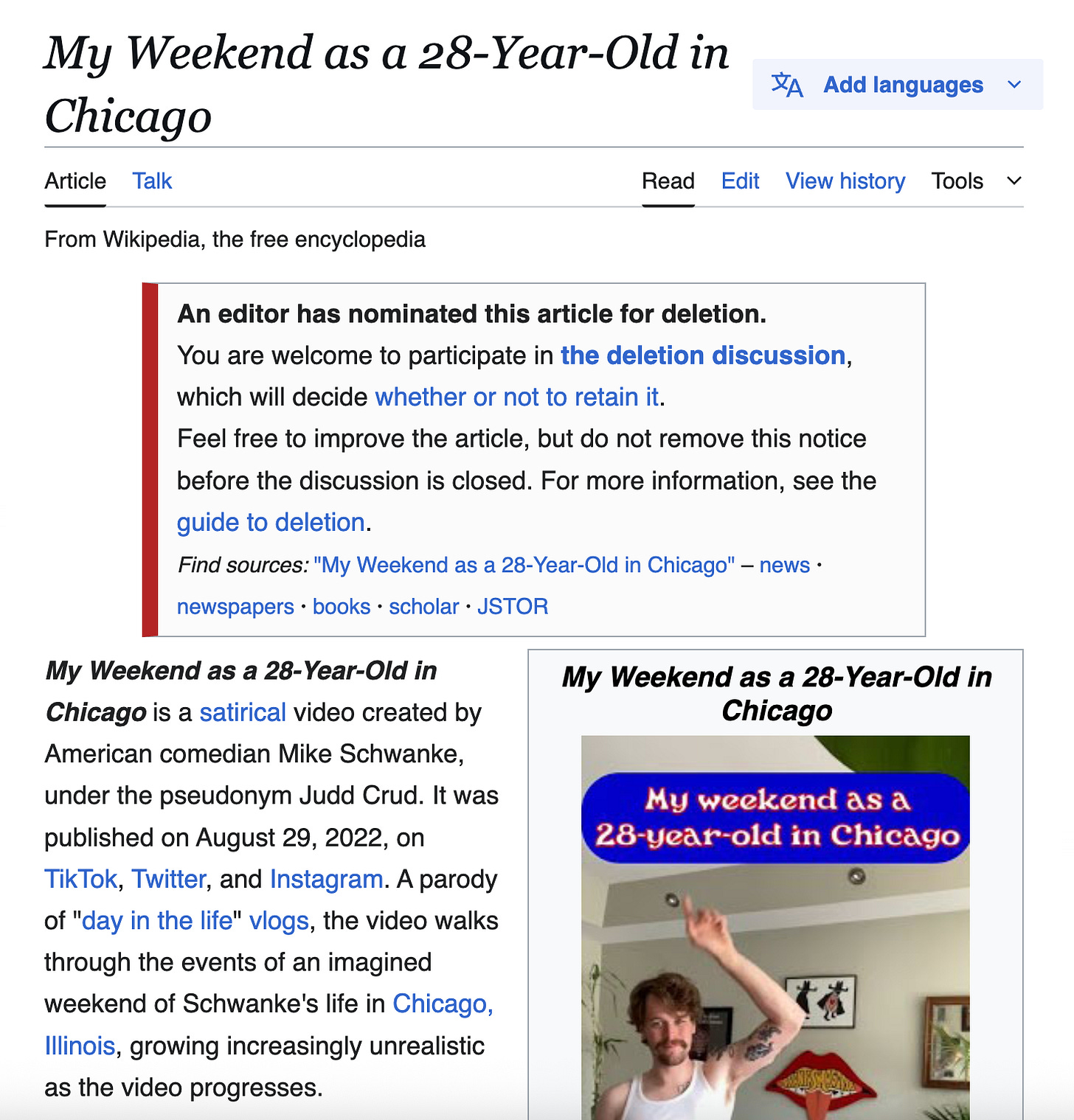
Here are a few notable highlights from the deletion discussion.
“Video does not seem particularly notable; a handful of pop-culture website mentions do not make it stand out” — Atomequal
“Creator of the article here, I'd argue that the number of solid sources is more than enough to justify the article's existence, and most of the sources are much more than just a mention. It should also be noted that the sources come from a wide range of time (from 2022 through 2025), indicating that the video has real staying power and is not just a flash in the pan.” — BanjoZebra
“Keep. I find it hard to believe that Vox, Guardian, & Mubi would all make articles on something not notable. In fact, the Mubi article is worth a read — it places the film (I don't think video works here as its a work of art, but that's neither here nor there) in context with its contemporaries, such as Honor Levy and How To with John Wilson.” — Dipthong01
“Keep: I get the temptation to say ‘oh it's just a TikTok video there's no way this is notable’ but we shouldn't arbitrarily raise our notability standards because we find a platform silly. There are multiple high quality sources that discuss this video specifically, which is particularly notable because much media coverage of tiktok and other social media deals with trends, etc. not specific videos.”
“Keep; Multiple credible sources cited here discuss this video in depth, particularly within the context of the wider ‘day in the life’ trend. It seems to have maintained relevance and left a lasting impact, meaning it is, in my view, notable enough to deserve this article.” — FiresBZ
“Deletion happens when a page is unsuitable, unhelpful, or does not meet the required criteria,” reads Wikipedia’s guide to deletion. There’s a lot we could get into here about what makes an internet trend, viral video, or meme Wikipedia-worthy. “Wikipedia is not a newspaper” is one important guideline. The criteria journalists use to determine if something is worth covering is not the same as what Wikipedians use to decide what should be included in the encyclopedia.
Because Wikipedia articles “must not include original research,” all of the material in an article must be “verifiable in a reliable, published source.” As such, in the deletion discussion, specific media coverage of the video is a key justification in keeping the article. Not to get too deep into minutiae, but this is also an interesting dynamic because what does or doesn’t get covered in mainstream publications is far from an exact science, especially when it comes to online trends.
Currently, there are only four articles in the “TikToks” category on Wikipedia. The other three are “Ratatouille the Musical,” “The Unofficial Bridgerton Musical,” and “Who TF Did I Marry?” There are also 34 Wikipedia pages under the category “TikTok trends,” including for the “sleepy girl mocktail,” “corecore,” and “sludge content.”
I dug around for some other interesting deletion discussions.
Haliey Welch (kept):
“The result was keep but move to Hawk Tuah Girl and make it primarily about the meme rather than the person. This is one of those strange discussions where everybody essentially agrees (or at least doesn't disagree) on that facts but reaches different conclusions about the outcome. There's agreement that there is enough sourcing. There's agreement that this source concerns an otherwise low-profile living person who is only known for one event. There's agreement that this doesn't mean that the event itself (the 'Hawk Tuah' meme) can't be notable even if the subject isn't.” — Joe, July 19, 2024
Since 2024, Welch has turned her viral moment into sustained internet celebrity, with the “Talk Tuah” podcast and of course, a crypto scandal. As of now, both “Hawk Tuah Girl” and “Talk Tuah” redirect to “Haliey Welch” on Wikipedia, while “Hawk tuah” is its own page.
Cop slide (kept)
Yapping (deleted)
Millennial pause (kept)
Instagram egg (kept)
An article for the “Sydney Sweeney Has Great Jeans” campaign currently has a deletion discussion, with users arguing it should be merged or redirected to the main American Eagle Outfitters article instead of having its own.
So does the article for the “Coldplay jumbotron controversy.” One user wrote that “There is no ‘enduring historical significance nor will this event have ‘a significant lasting effect.’”
Most of the articles on Wikipedia’s list of viral videos originate from YouTube. I think the comparative lack of TikToks is not because the platform has any less cultural impact, but because of the internet’s fragmentation into niche communities and “viralflation,” as Taylor Lorenz wrote about in 2024.
Meme break
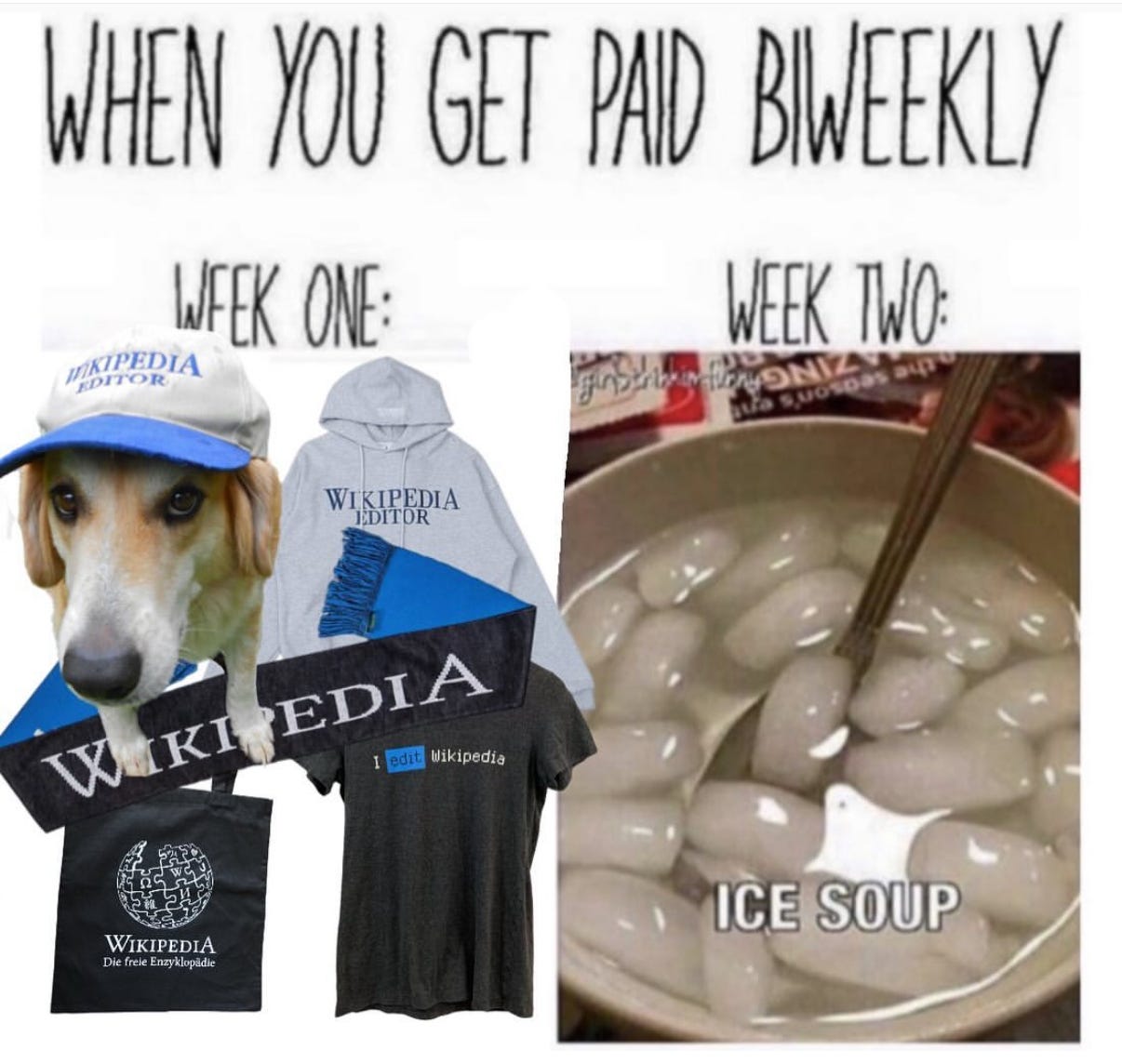
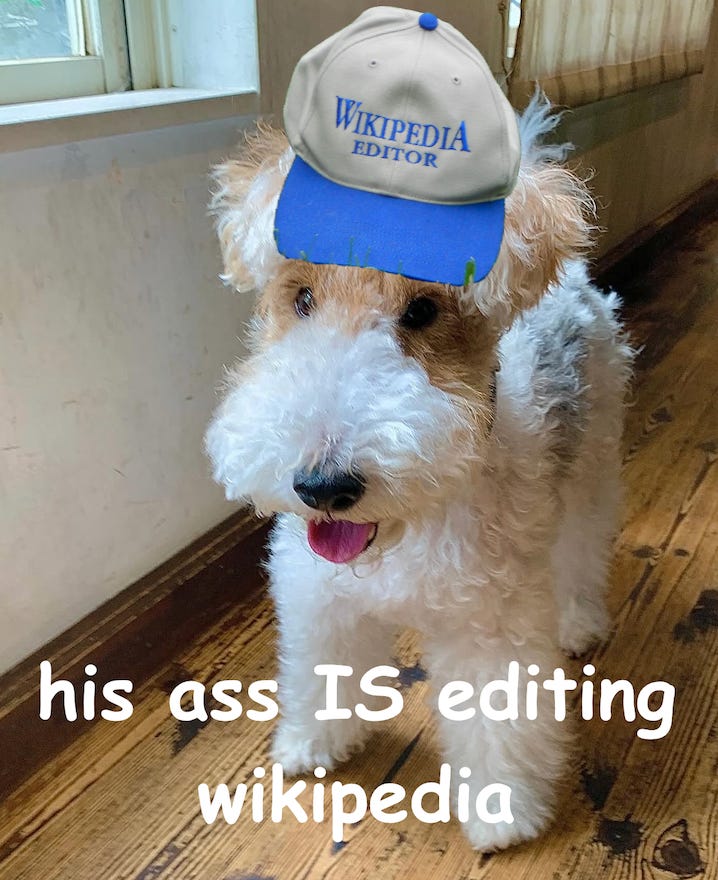
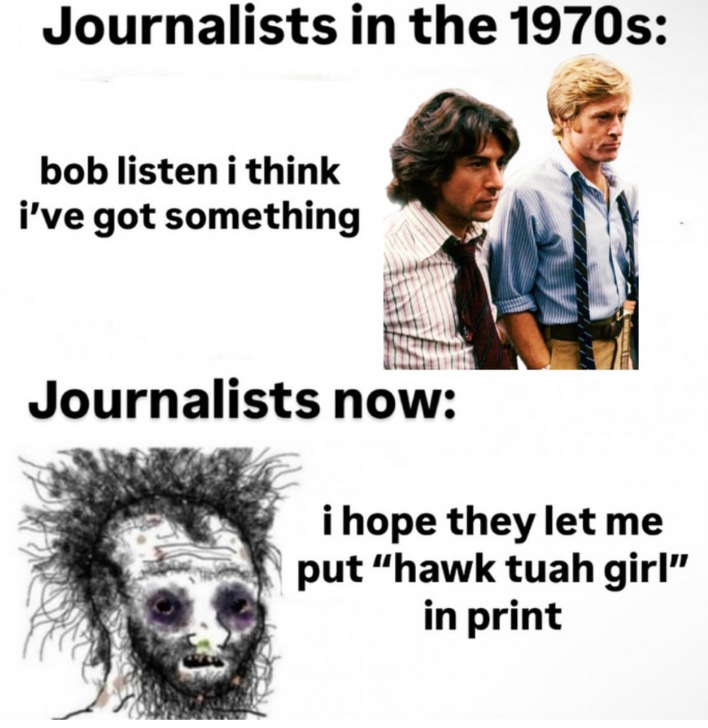
Elsewhere online
The New York Post Media Group will launch The California Post in early 2026. I’m fascinated by the history of The New York Post in general. When I reviewed the book “Paper of Wreckage” by Susan Mulcahy and Frank DiGiacomo for my college newspaper, I learned that under the leadership of Dorothy Schiff, the paper was considered more liberal than the New York Times.
“While the Times newsroom was polished, with people dressing up for work, the Post’s office was covered in coffee cups and cigarettes, with alcohol-fueled parties and romantic and sexual affairs often blending into the working lives of the staff. It wasn’t until Watergate that the journalistic profession became more elite; before then, it was considered something one didn’t need a college degree to practice,” I wrote in my review.
The @afffirmations meme account has made a couple of collaborative posts with Sony Classics (@sonyclassics) and the movie “Oh, Hi!” (@ohhi_movie) starring Molly Gordon and Logan Lerman.
I’ve previously commented on how @afffirmations, @nolitadirtbag, and other meme accounts have done brand partnerships we typically associate with traditional influencers. @afffirmations currently has over 950,000 Instagram followers. @thefilmmemes, which has 290,000 Instagram followers, also made collaborative posts with @ohhi_movie and @sonyclassics.
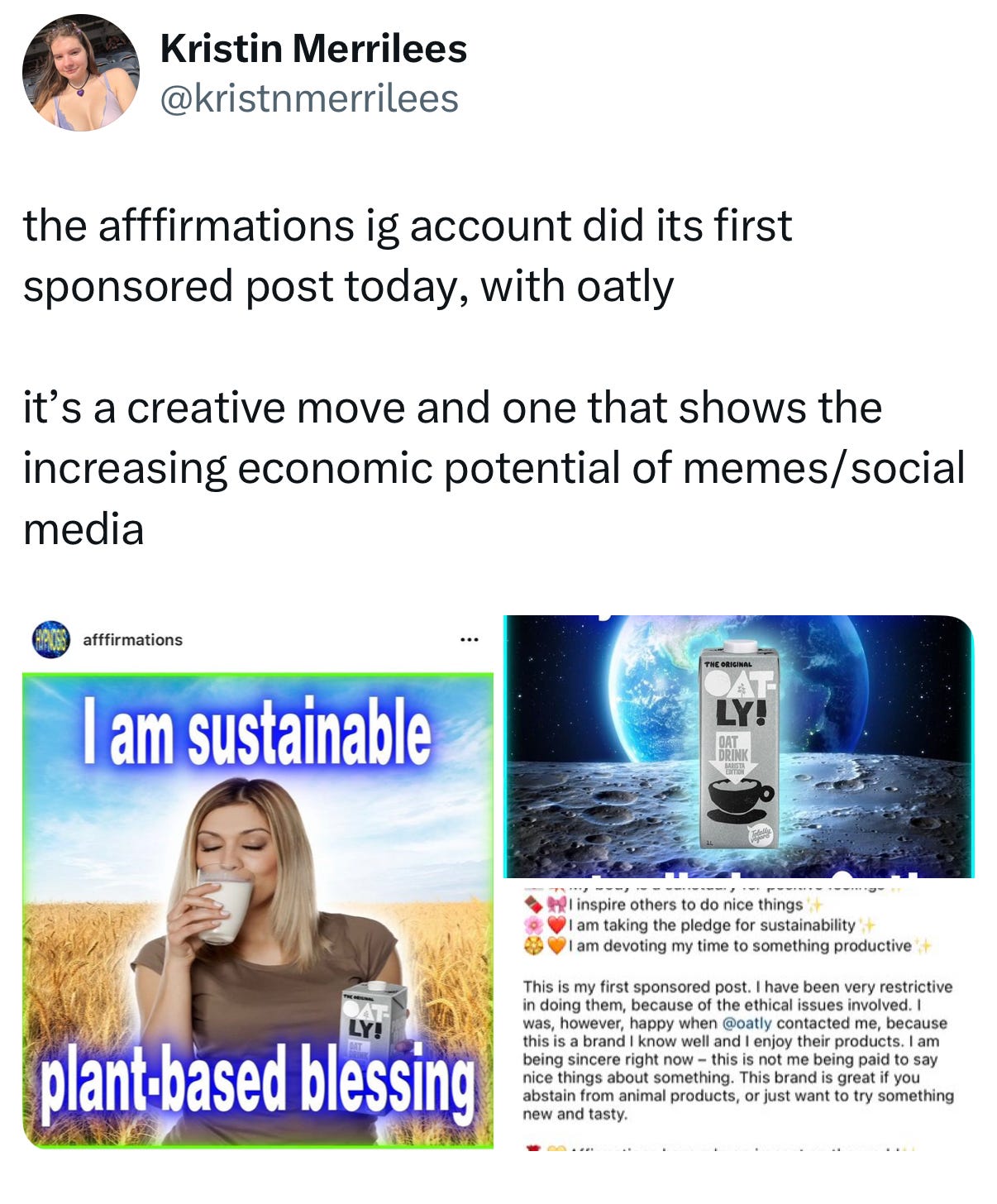
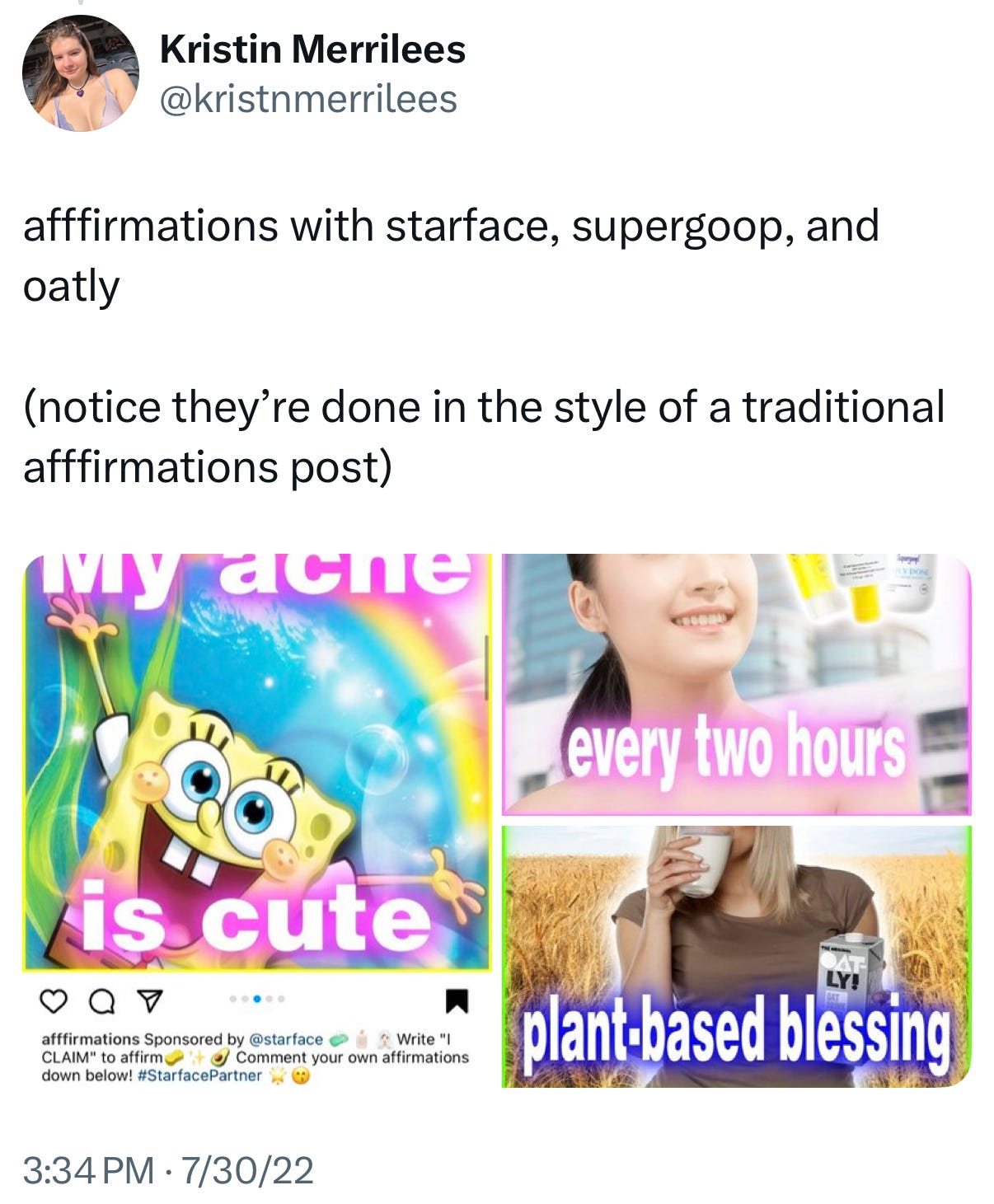
Friday was one year since the Sacred Screenshots exhibition curated by the fantastic Maya Man, who chose 26 artists to choose a “sacred screenshot” for the show. Here are some pictures I took!

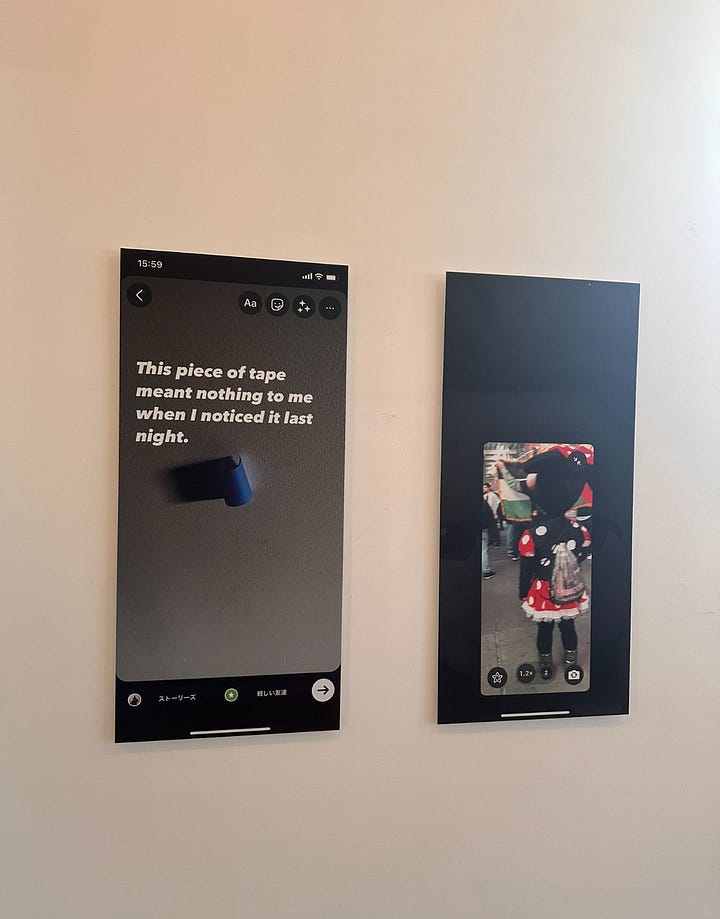
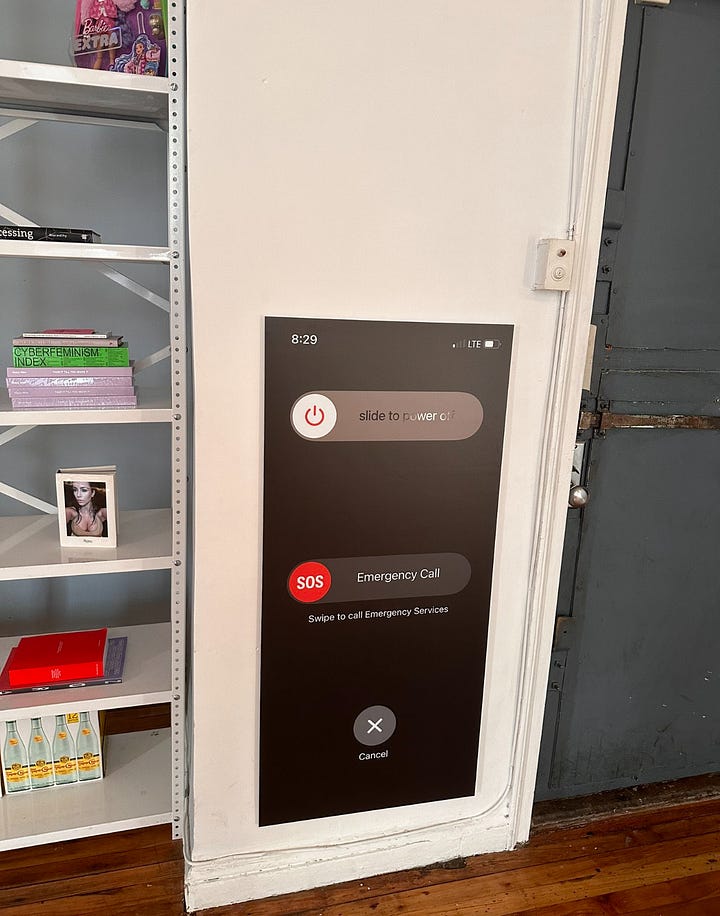
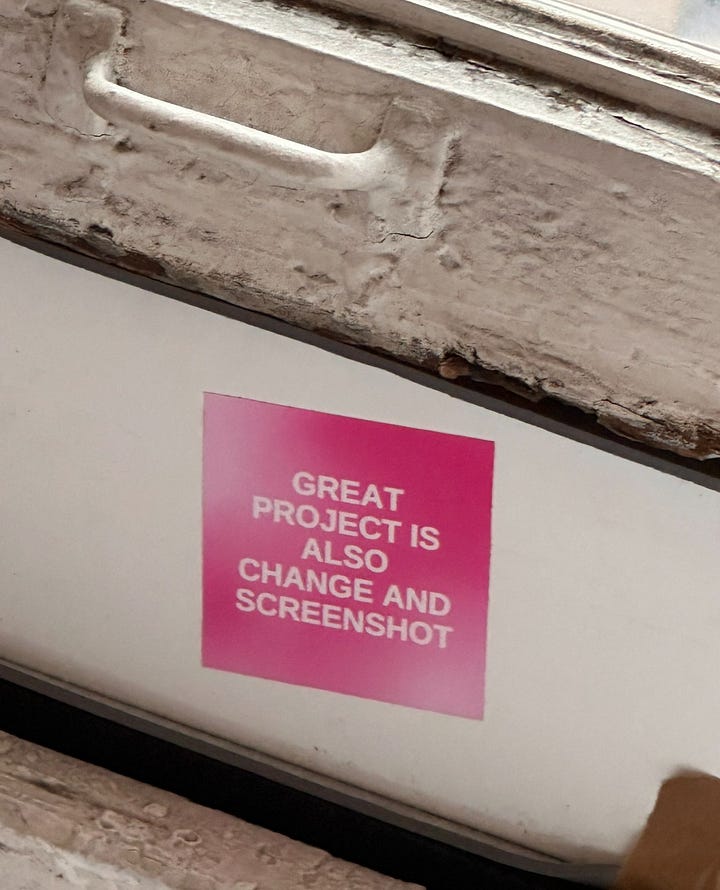
Saturday was HTML Day and my first time attending! I’m working on a more reported piece, but I went to the New York City one. Send me a link if you made anything cool!
The newsletter infinite scroll by youth media company Centennial World has rebranded to Keep Scrolling For. “As a bootstrapped independent media brand with a tiny team, we are stretched thin every week and often something’s gotta give. Usually, that something is the newsletter,” the team wrote two Sundays ago. They added that they received an influx of subscribers in September, but realized that those readers were actually looking for a different newsletter by the same name. I would guess that’s Infinite Scroll by Jeremiah Johnson. Kyle Chayka’s The New Yorker column also shares the name. Keep Scrolling For will publish three newsletter series per month, one keeping the “Infinite Scroll” name and the other two called “Hit Follow” and “Close Friends.”
I’m interested in internet culture and technology newsletter names, partly because I had a difficult time naming my own. I think it’s hard to do something that’s not taken, snappy, and unlikely to sound dated six months from now. PHONE TIME came in part as a play on “screen time,” but “phone time!” is also something my family began to say at dinners when conversation was lulling and it was time to check our devices. Multiple people have actually told me the content reflects “computer time” better, which is fair. “Screentime” is the name of Lucas Shaw’s newsletter at Bloomberg, which offers a “front-row seat to the collision of Hollywood and Silicon Valley.” John Herrman’s Intelligencer columns also use the tag “Screen Time.” I’m thinking of Syntax, Cursor, and Reboot as a few examples of tech publications with one-word names.
A smattering of other digital culture-related newsletter, podcast, and column names, not in any particular order and not all actively publishing: It Happened Online (The New York Times), Saved Folder (Byline), Internet Brain (Byline), Computer Love (Byline), web_crawlr (Daily Dot), The Medium (The New York Times), Rabbit Holed (Pitchfork), Rabbit Hole (The New York Times), Uncanny Valley (WIRED), The Monitor (WIRED), Locked In (Cosmopolitan), Logged On (Dazed), Logged On (Teen Vogue), Endless Thread (WBUR), Close All Tabs (KQED), The For You Page (Jezebel), Under the Influence (Defector), Delete Your Account (VICE), The Techtress (Refinery29)
Speaking of series with the title “close friends,” Instagram has an original video podcast “Close Friends Only,” billed as “where your favorite duos give you a glimpse into what—and who's—inside their green circle of trust,” available on platforms including Spotify and YouTube. The first four episodes feature conversations between Reneé Rapp and Rachel Sennott, Megan Thee Stallion and GloRilla, Lil Yachty and Druski, and Carmelo and Kiyan Anthony. The most recent and fifth episode features “The Fantastic Four: First Steps” cast members Pedro Pascal, Ebon Moss-Bachrach, Joseph Quinn, and Vanessa Kirby. With Instagram-branded mics, question cards, and mugs, guests talk about topics like DM habits, favorite emojis, finstas, and favorite follows, interspersed with other non-Instagram-related questions. I see this as another potential stop along the new-media-era celeb press tour.
There’s much more here that I’ll write about at a later date, but I’m especially interested in the editorial work coming out of social media companies. Human curation has long been a part of Instagram, even in its first year.
“Because Instagram didn’t have an algorithm or any way to re-share photos, there was no natural way for content to go viral. So Instagram employees had the opportunity to decide for themselves what kind of user behavior to reward, handpicking interesting profiles to highlight on the company blog,” Sarah Frier writes in the book “No Filter.”
In 2021, Instagram launched the first issue of “Instagram Insider,” focused around fashion and beauty. It was described as a “‘zine,” but reminded me more of a Pinterest trend report. There have been two subsequent issues of Instagram Insider, also published in 2021.
Instagram and Polyester Zine hosted a private “E-Girl Summit” ahead of the launch of Polyester’s “bed” issue, which also produced a limited-edition zine of its own. Polyester has published work covering Instagram culture, as well as Meta’s censorship of Pro-Palestine content.
Polyester has existed since 2014, but I’m interested in how and whether newer zines, blogs, Substack newsletters, and other publications—especially within the feminist, Gen Z, and internet culture space—choose to collaborate with brands. Unpublished Zine, a Gen Z publication launched during the early pandemic and where Instagram was central to audience-building, collaborated with Messenger in 2021. In my conversation with Daughter Zine’s editor in chief Grace Anne McKean, published last month, we discussed the risks of co-optation that come with advertising and brand partnerships.



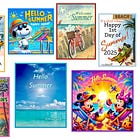
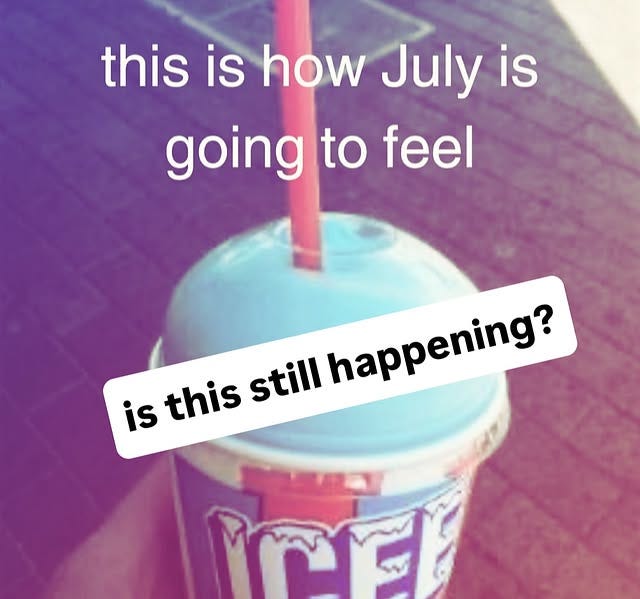
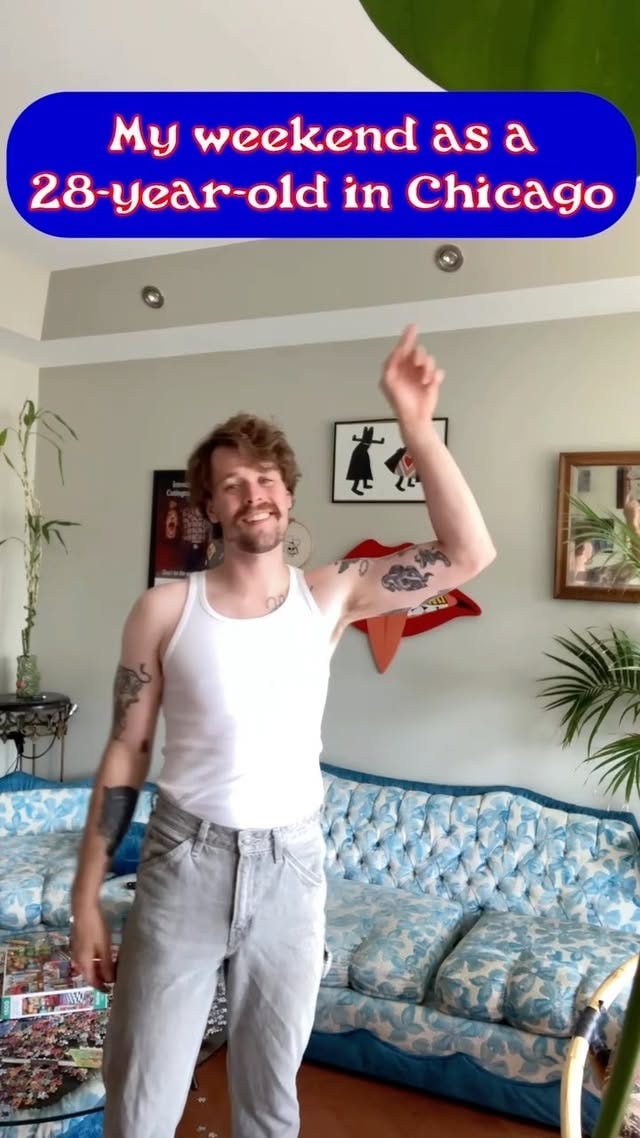
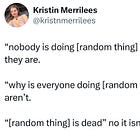


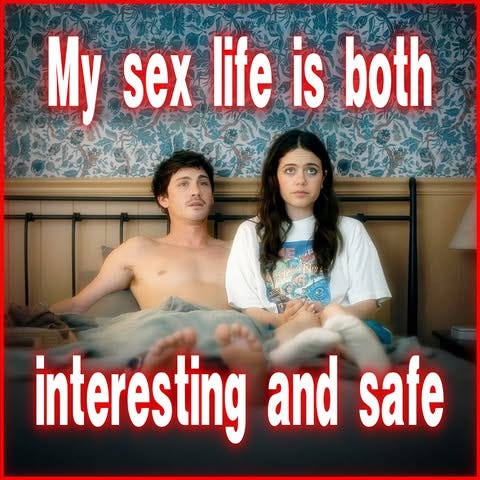

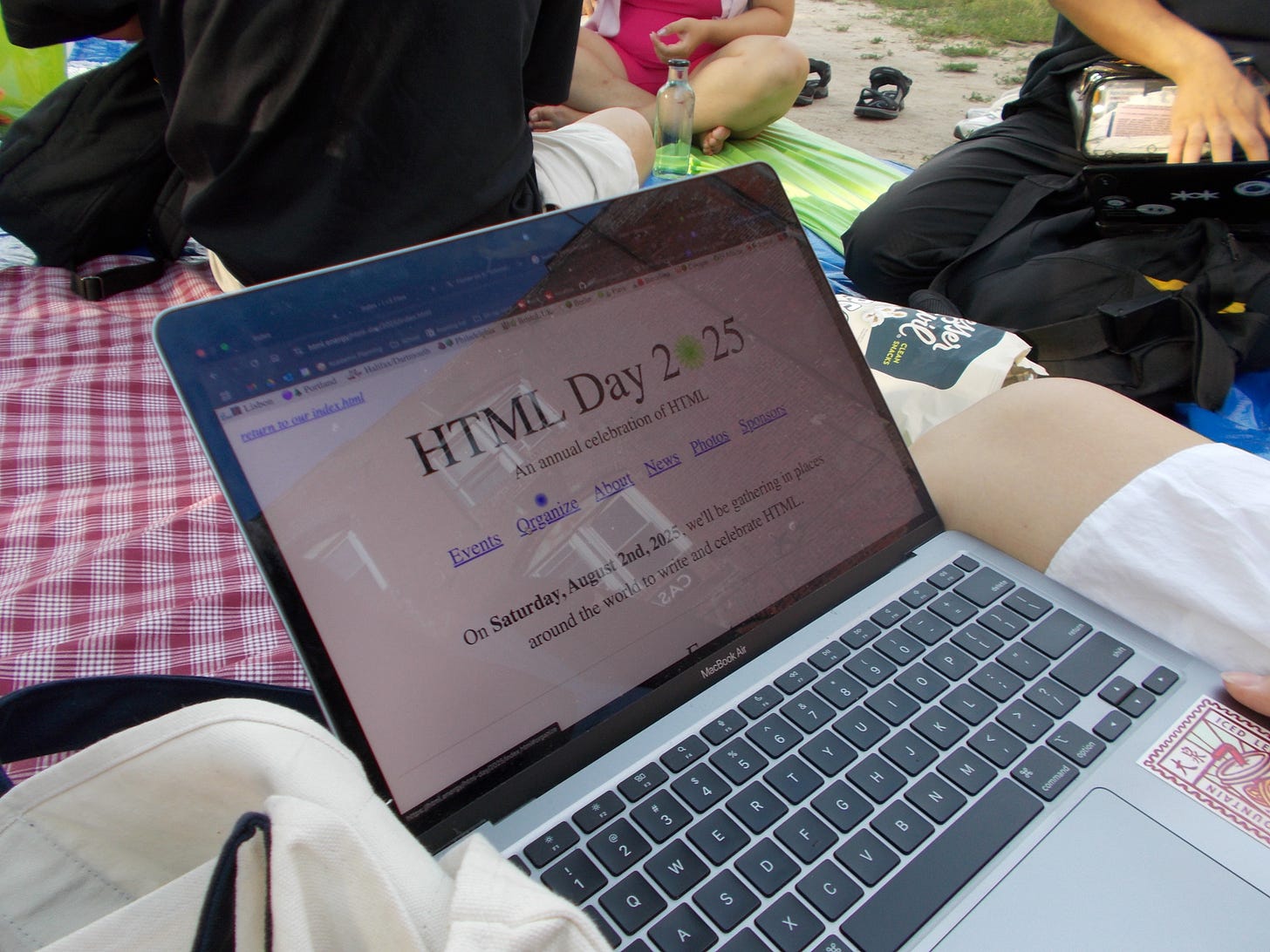
This is exciting! I hadn’t even had this article on my radar. Glad to see I’m not the only person on Substack who enjoys a good deletion discussion
brilliant post, and the forensic wikipedia deep dive is impeccable